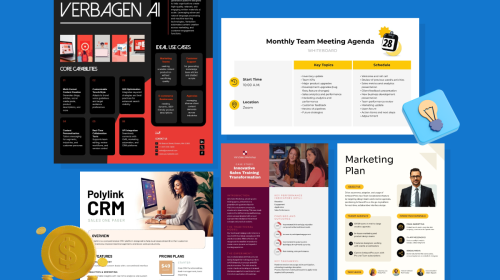
How to Make a QR Code for Free


QR codes are like the internet and cryptocurrency when they first appeared. People doubted they would ever really make a dent in society or even business.
Yet here we are, dependent on the internet for pretty much everything, looking at cryptocurrencies rise and fall, and using QR codes left and right for all sorts of things.
And now, you’ve landed here looking for a way to make a free QR code.
Well, we’ve got you covered.
In this post, we’ll show you how to make a QR code for free, how to add it to your designs and projects, and how to track your QR code’s performance.
Let’s get started.
Before we get into the thick of it, let’s talk a bit about QR codes themselves; what they are and why they are useful.
A QR code is a pixelated pattern that holds information, much like a barcode on product packaging. It is created with a QR maker.
The information stored in a QR code is accessed with a mobile phone camera.
Before, you used to need a QR code reading app, but now most phones have it integrated into the camera. When you have the camera pointed at anything that includes a QR code, the information will pop up or an action will happen.

In this post, we've put together a list of the 15 best QR code generators on the market.
The first QR codes were created in 1994 by Japanese company Denso Wave. The QR in the name stands for Quick Response because it was much faster to read than regular codes. The idea behind the QR code was for it to hold more information than a barcode could, plus for it to be read fast and more easily.
Even though Denso Wave created the QR code and held the patent for it, they licensed it for public use. In 2002, QR codes became increasingly popular in Japan when new mobile phones were sold with a QR reader app already installed.
The years after that, it was touch and go for QR codes. They were big in Asia for things like retail, banking, getting coupons or navigating to a website but not very common in the rest of the world. Little by little, the use cases spread and they started showing up in print advertising all over the world.
For a while, there was a dip in their popularity (mostly in the West) but when the pandemic hit, QR codes became a necessity for no-contact transactions. First, QR codes replaced paper menus at restaurants and now, QR codes are used for proof of vaccination.
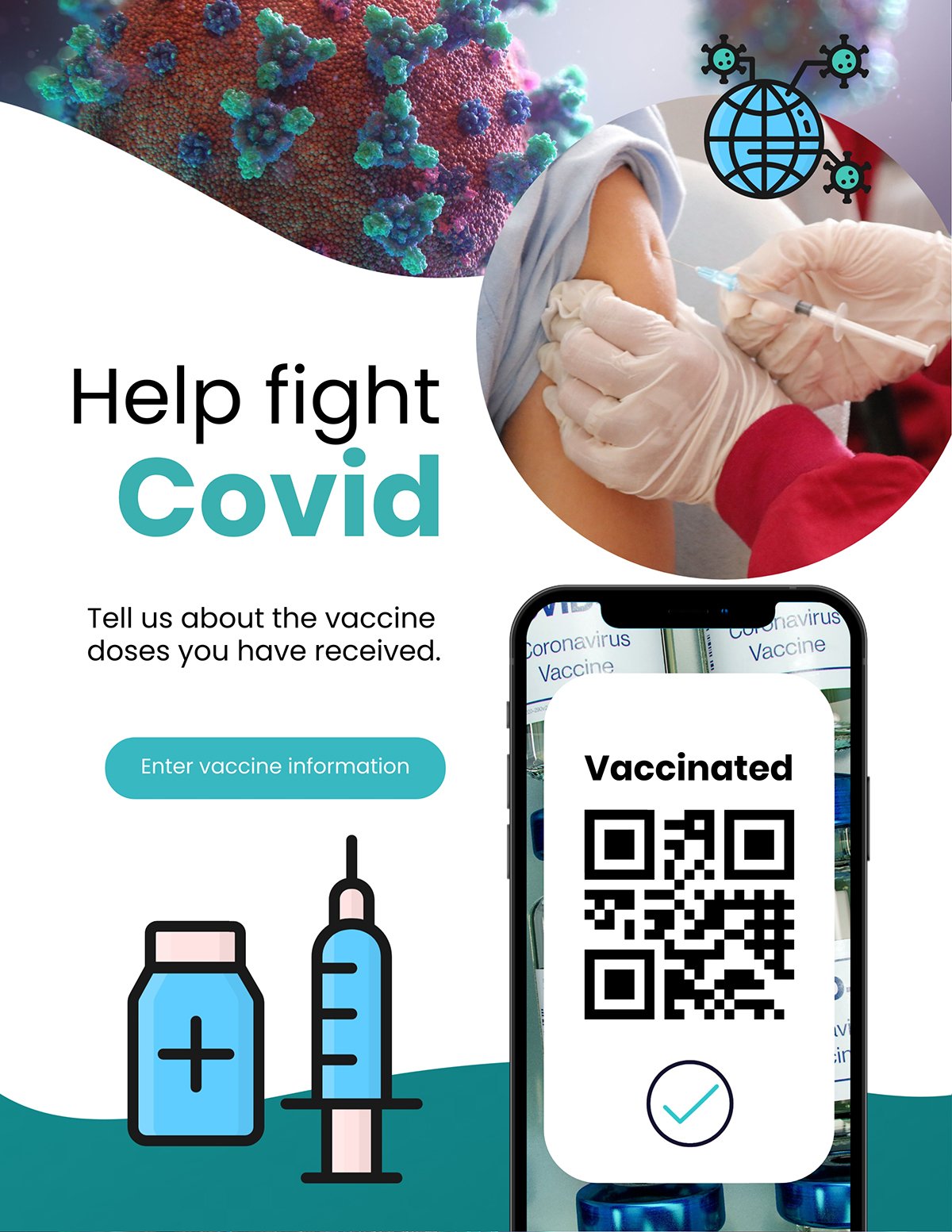
The use cases for a QR code are vast and varied—from sending users a restaurant menu to paying at checkout and more.
The usefulness of a dynamic QR code is based on the easy connection between a person and digital information. Scanning one is convenient as it bypasses any Google searching or URL copy-pasting.
For example, today we ordered sushi for lunch. There were QR codes on each sushi box, both inside and outside. There was also a QR code on the bag that holds the chopsticks. One sent me to their menu and the other to a review form.
Yesterday I received a box of fresh produce, and the QR code on their box sent me to a page with all their social media accounts. The other day, I was walking down the street and noticed one of the many posters with QR Codes, one with some interesting sandals caught my eye.
The code sent me to a page explaining that if you shared the photo of that poster on your Instagram account, you’d get a 20% discount on any sandals in their store.
And that’s just this week.
What will you use a QR code for?
Here are some ideas that are great for business:

QR codes have two functional styles; static and dynamic. Static QR codes are created once with one set of information and can’t be changed later. Dynamic QR codes have the unique ability to be changed into something else at any time.
The QR codes you can create with Visme are static.
Unless your QR code holds information that leads to an app download or geolocation, you can bypass the static limitations by directing the QR code to a page on your website where you simply change the information inside the page while the link never changes.
Now, let's get into the process of making your own QR code (for free!)
Before creating your QR code, you’ll need to strategize the use for it. Even if QR codes are getting popular and quickly becoming part of our lives, it doesn’t mean you should use them randomly. Always have a purpose behind your QR code that will help your marketing efforts.
For example, restaurant-goers now expect to use a QR code to see the menu. In many cities, every promotional poster on neighborhood walls has a QR code. So, start thinking:
There are many types of marketing materials that can be a great opportunity to add a QR code. Think of how a QR code can improve communication with the user, giving them vital information that isn’t included in the main design. The QR code is meant to make things easier for them.
Once you’ve selected the purpose of the code, choose its location. Include it in a larger design project, or maybe make the QR code the main element with simple design features around it, along with a CTA.
Sign up. It's free.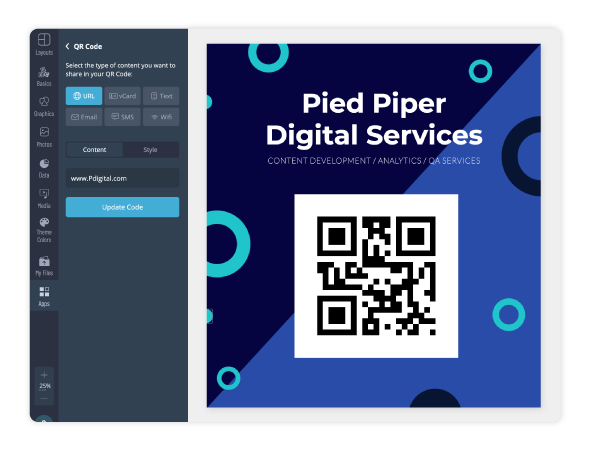
Add QR codes to your designs and projects.
Now, it’s time to create the code with the information you want to tie to it. With the final design ready, navigate to the Apps tab on the left toolbar and scroll down to the QR code generator.
Visme's QR Code generator has a number of options for the type of information you add to it. Let’s take a look at each one.
URL
The URL option is the most common when it comes to QR codes. Add any URL you want to the link input tab and generate.
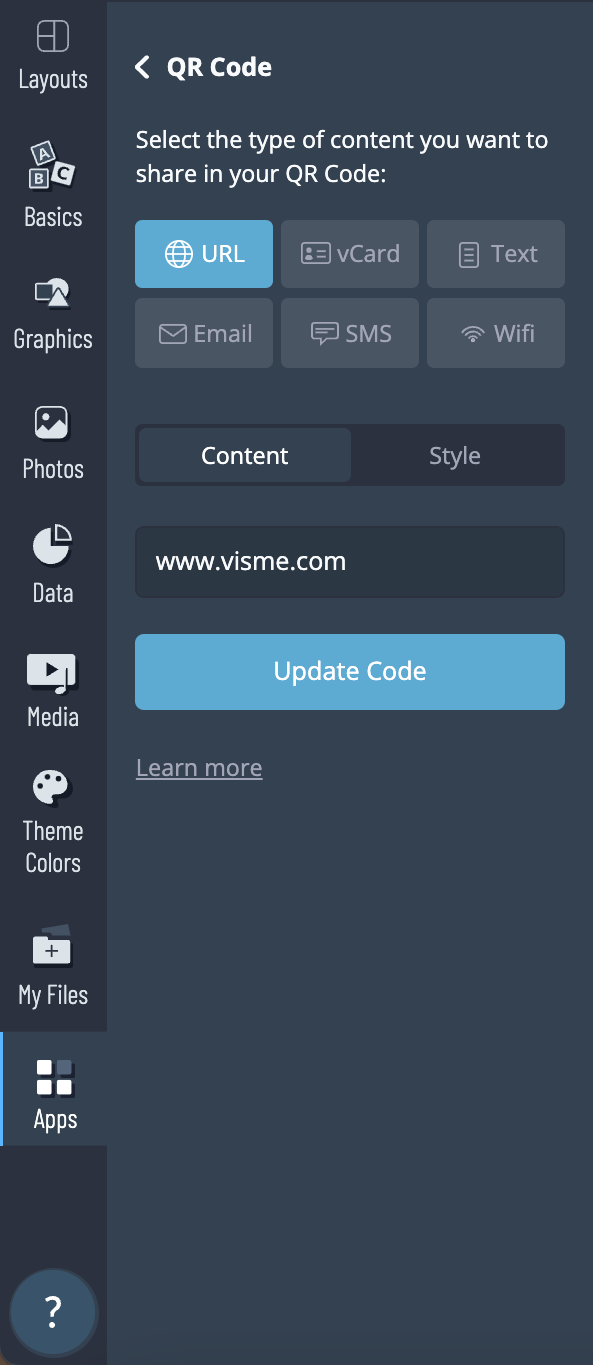
This is your best option if you use a URL similar to LinkTree where the URL stays the same even after you’ve changed the content on the page (easy to do with a Visme live project.)
Likewise, use this option to show a digital menu, an online review form, a social media channel, your website or a how-to guide.
vCard
The vCard option is ideal for sharing your contact details in a QR code.
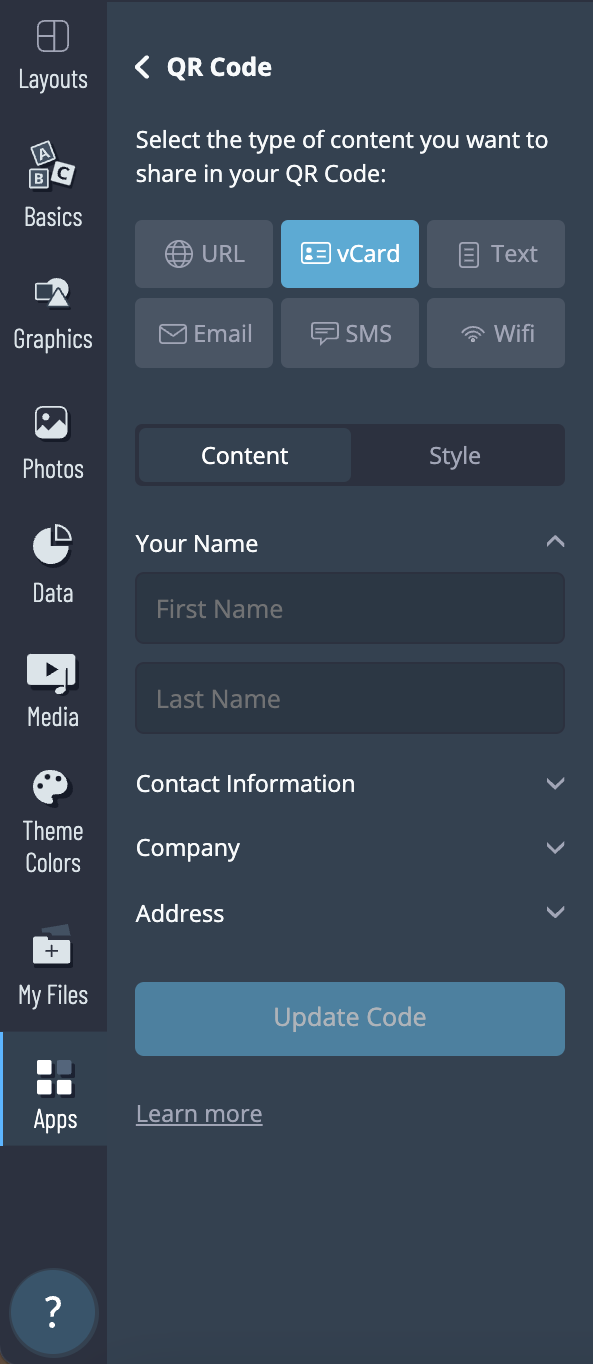
When someone scans your vCard QR code, all your info pops up as a contact that they can easily save to their phone. Input information like; your name, company, position, phone number, email, website and address.
Include this QR code on a card you pass out or show it on your phone for them to scan.
Text
When someone scans the QR code with text information, the text shows up on the screen.

Some mobile phones, like the iPhone, offer the option to copy the text or search for it on the default internet browser. Use this if you want to share a coupon code or a hidden message like a fortune cookie.
The email QR code is meant to help the user email you. Depending on the mobile device, the person scanning the code will have the option to send you this email, simply copy the email address or create a new contact with your email.
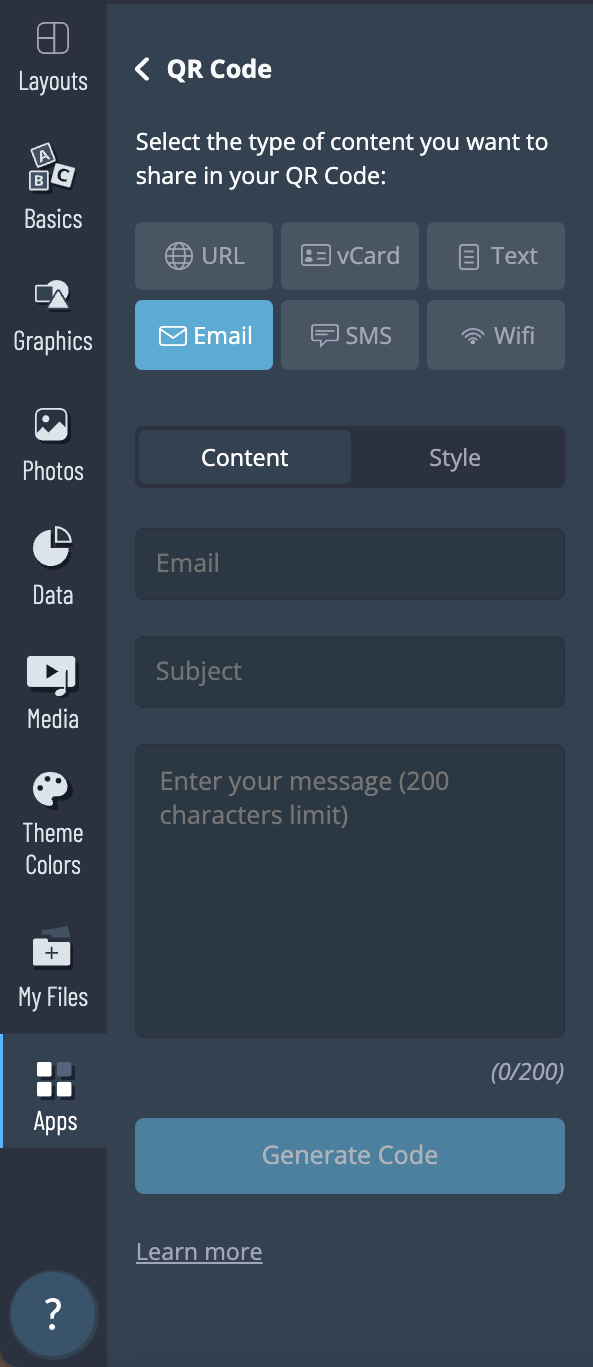
Since the QR readers don’t immediately send the email but instead give options, include a CTA next to your code, explaining what it does and how to use it.
SMS
Similar to the email option, the SMS QR code is meant to send an SMS to a specific phone number.

Just like the email QR code, mobile phones show options like sending the SMS to the number, saving the number or using another messaging app instead.
Include a CTA explaining, like “Scan to send SMS code and enter the contest.”
Wi-Fi
The Wi-Fi QR code is an easy way to share your Wi-Fi network with visitors, guests or customers. By simply scanning the code, they can join the network.
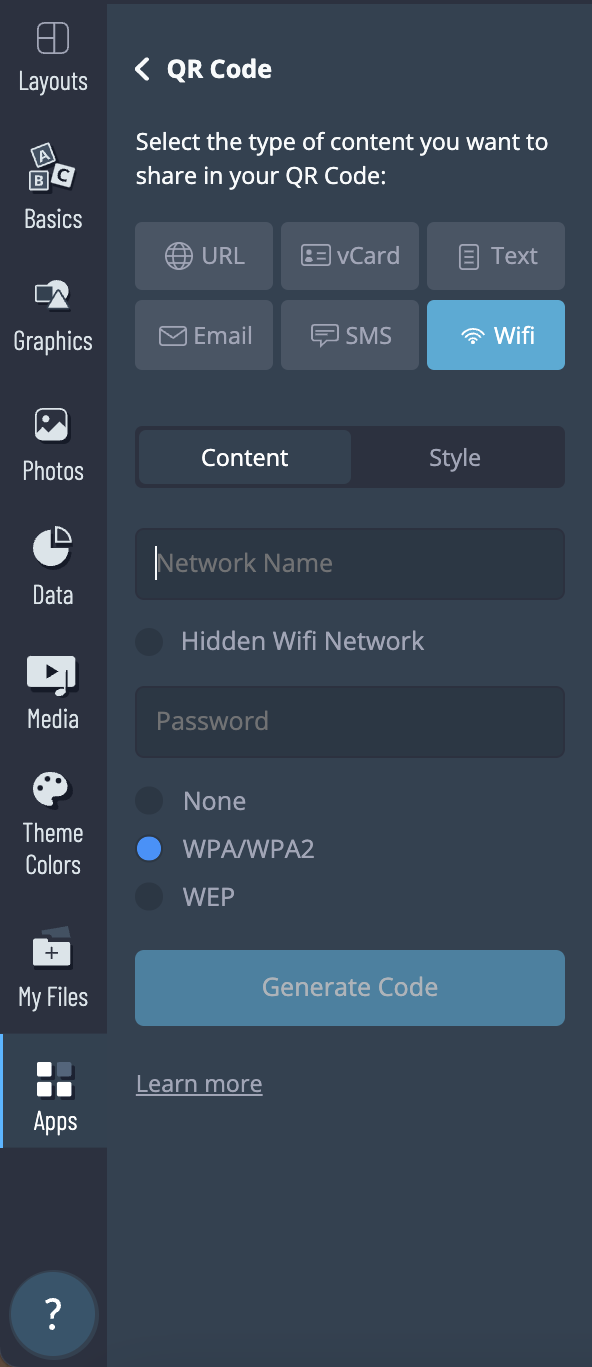
Input the information including the network name, security type and password. Create a sticker or a poster with the QR code and place it somewhere visible and easy to scan.
Before you generate the code, select the white over black or black over white style — you can try both before making a final decision. When you generate the code, it’ll appear on your design in the center of the canvas.
Now, it’s time to adjust the size and location of your code. The general standard size is to make it at least one inch x one inch so that it’s easy to scan.
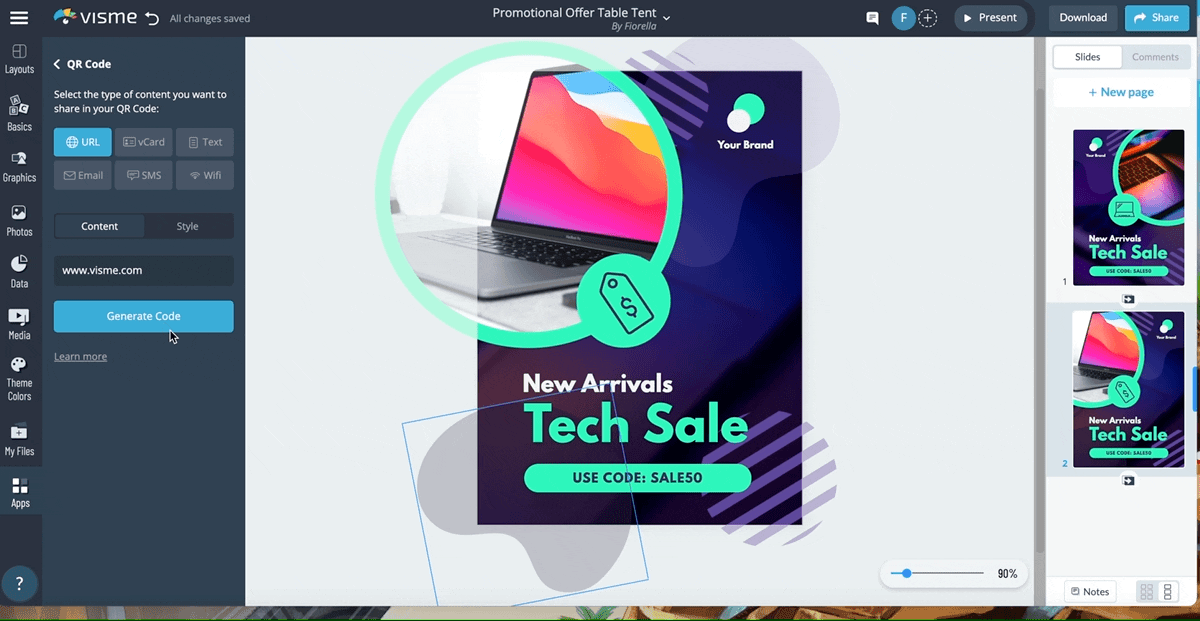
Make sure the QR code has a noticeable place in your design with enough space around it for easy scanning. Remember to add a CTA near the QR code, sharing any important instructions.
For example, our sushi order today had two QR codes along with information about what they were. The QR code for the menu had the word “menu” in big letters next to it.
The one for the review was encased in a frame with a CTA inviting the consumer to leave a review in exchange for a 10% discount on their next order.
Just like other kinds of marketing strategies, your QR code marketing strategy needs to have Key Performance Indicators (KPIs) to help you track your efforts and your QR code's performance.
There are two ways you can easily track your QR codes; through a live link to a Visme project or via a page on your website using UTM parameters in the URL.
Every project created with Visme can be tracked, as long as it’s published to the web — you’ll find this option when you click the Share button on the top right of your editor.
Visme’s analytic tools show the number of opens, location demographics and duration of view.

The types of projects you can direct QR code scans to with Visme include:
... and much more.
When you add a link to your website in a QR code, adding UTM parameters will help you track the QR code scans. UTM parameters are a tag added to a URL that helps track the source of the traffic to your site using Google Analytics.
The easiest way to add UTM tags is to use the Google Analytics URL Builder but you can also do it by hand. Tracking the traffic from your QR code to your site on Google Analytics is essential to know if your QR code marketing efforts are working.
You’ve done it! You created a QR code for free, and your marketing efforts have entered a new era. What did you use the QR code for? We’d love to know!
Here’s a pro tip to help you share the results of your QR code. When you’ve tracked the opens and visits to your site from QR code scans, you’ll have to share the results in a report.
With the Visme and Google Analytics integration, you can create a custom report that matches your brand and message. Personalize the data and include it along with the initial purpose of your QR code and the positive or negative results.
Have you created a Visme account yet? Not only can you use Visme to create free QR codes, but you can also design any type of marketing materials for your business. Sign up today for free!
Design visual brand experiences for your business whether you are a seasoned designer or a total novice.
Try Visme for free